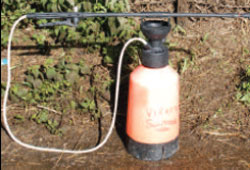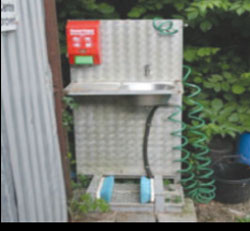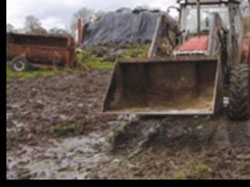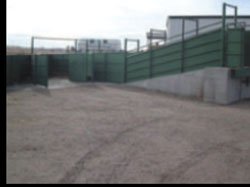



Lorry Biosecurity
Inexpensive and simple steps can greatly improve biosecurity on your farm, according to BPEX in No. 43 in the 'Action for Productivity' series.Lorries collecting pigs for slaughter pose a major biosecurity risk to the health status of your herd.
At relatively little cost, however, simple steps can be implemented to improve the biosecurity on your farm and reduce the risk of disease spread from livestock lorries.
Targets
- To prevent the introduction of disease to your farm from livestock lorries
- To develop a protocol for drivers and staff and ensure it is adhered to
Biosecurity is the set of practical measures you take to limit the spread of infectious diseases. Reducing the spread of disease will help to maintain the health of the unit, reduce the costs of disease and maintain productivity. Biosecurity should be part of every pig unit’s disease risk management programme.






Where would you prefer to load your pigs?
Management Guidelines
Lorries
- All lorries should be cleaned and disinfected prior to entering the farm
- A zero tolerance policy should be given to livestock lorries attempting to enter your farm if they are poorly washed, as diseases such as swine dysentery and PRRS can be spread in faecal material
- Install a disinfectant wheel dip at the entrance of the farm
- If a wheel dip is not practical, spray the wheels and arches of the vehicle with a knapsack sprayer using an appropriate DEFRA approved disinfectant.
People
- Provide adequate personal protective equipment (PPE) for lorry drivers if they are involved in loading pigs. This should include wellington boots, overalls, waterproof trousers and disposable gloves
- The drivers’ PPE should not be worn by any farm staff and should be cleaned and disinfected after use; binning any disposable items of clothing
- Provide a disinfectant foot dip with a brush to remove debris on the farm side as well as on the perimeter; all gross faecal material should be removed before using foot dips
- Remember that dilution by rainwater, using the wrong concentration and infrequent replenishment will reduce the effectiveness of foot dips
- Under no circumstances should lorry drivers collecting pigs enter any pig building
- Farm staff should not enter the livestock vehicle unless deemed absolutely necessary, this is particularly important if the lorry has come directly from an abattoir
- If staff must enter the lorry, they should thoroughly clean and disinfect footwear and change PPE before reentering the farm
- Adequate wash facilities should be provided to allow the driver to wash his hands and boots before and after loading is complete.
Loading area
- Ideally, site the loading bay on the perimeter of the unit, away from pig buildings and paddocks
- Design or re-design it so that it can be easily cleaned and there is easy control of pig movements
- The loading ramp should be designed to ensure that water drains away from the unit after cleaning
- Keep the area around the loading bay clean so that lorries leave your farm clean as well
- A simple idea to prevent cross contamination is to paint a line on the loading ramp that distinguishes between the driver and farm areas, neither staff nor drivers should pass beyond this point
- Once a pig has walked onto the livestock trailer, do not allow it to re-enter the farm
- The loading ramp, including sorting area, should be thoroughly cleaned and disinfected after every batch of pigs is loaded and unloaded; ideally, separate PPE should be worn for this task.
Further information
- Action for Productivity 10: Cleaning and disinfection
- Action for Productivity 13: Biosecurity
January 2014








